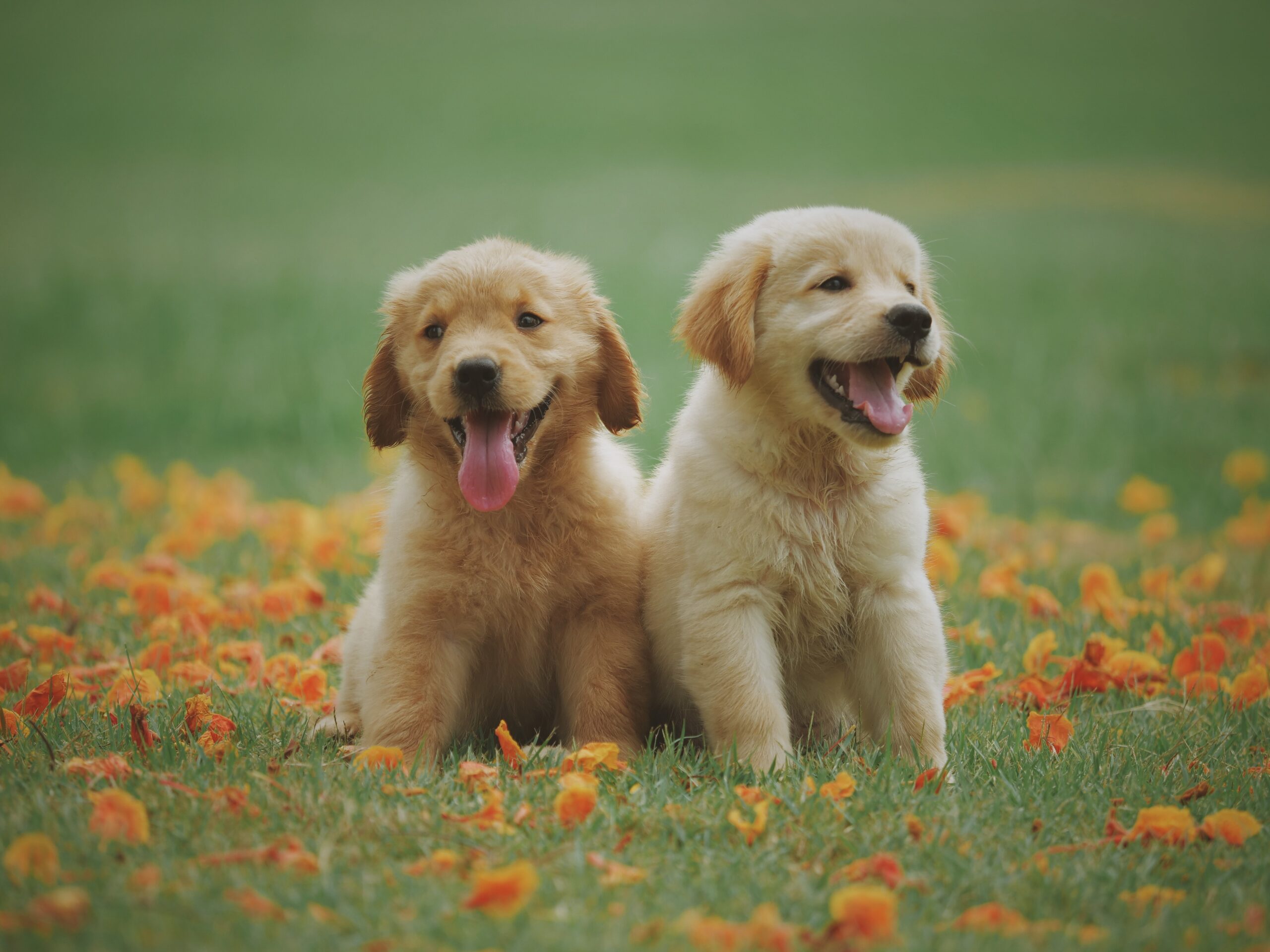Welcoming a new puppy into your life is an incredibly exciting and rewarding experience. The boundless energy, unconditional love, and heartwarming companionship that a furry friend brings can enrich your life in countless ways. However, along with the joy, it’s essential to recognize the significant responsibility that comes with bringing a puppy into your home.
The arrival of a new puppy fills a home with laughter, warmth, and endless moments of sheer delight. Their playful antics, unwavering loyalty, and affectionate nature have the power to brighten even the dullest of days. The companionship of a puppy can provide solace, reduce stress, and create lasting memories that leave an indelible mark on your heart.
Yet, amidst the cuddles and tail wags, lies a substantial responsibility. Puppies, like young children, require nurturing, guidance, and careful attention. As their primary caretaker, you are tasked with shaping their behavior, ensuring their well-being, and setting them on the path to becoming a well-adjusted and happy adult dog. This responsibility should not be taken lightly, and adequate preparation is key to providing the best possible start for your new furry family member.
Just as you would prepare your home for the arrival of a new baby, preparing for a new puppy is paramount to a smooth and successful transition. Puppies, like any young beings, thrive in an environment that is safe, stimulating, and supportive. Adequate preparation not only eases the puppy’s adjustment but also helps you, as the owner, feel more confident and capable in your role.
Proper preparation minimizes the stress and challenges that can arise when integrating a puppy into your household. By anticipating the puppy’s needs and creating a well-structured environment, you’re setting the stage for a harmonious and fulfilling relationship. From gathering the necessary supplies to establishing routines and understanding basic training principles, each step of the preparation process contributes to building a strong foundation for a lifelong bond with your furry friend.
In the sections that follow, we’ll delve into the intricacies of preparing for a new puppy, guiding you through the essential steps to ensure that both you and your new companion embark on this journey with joy, confidence, and a shared sense of adventure.
Research and Decision-Making
Before you bring a new puppy into your home, it’s crucial to embark on a journey of research and thoughtful decision-making. This phase lays the groundwork for a successful and fulfilling partnership between you and your canine companion.
Choosing the right breed for your lifestyle
Every dog breed has unique characteristics, temperaments, and care requirements. It’s important to choose a breed that aligns with your lifestyle, preferences, and capabilities. Consider factors such as the breed’s energy level, size, grooming needs, and potential health concerns. Are you an active individual who loves outdoor adventures, or do you prefer a cozy indoor lifestyle? Do you have ample time to dedicate to exercise and training, or do you need a breed that requires less intense activity? Researching and selecting the right breed ensures that your new puppy’s needs are met and that you can provide a nurturing and suitable environment.
Considering adoption from shelters or rescue organizations
Adopting a puppy from a shelter or rescue organization is a compassionate and impactful choice. Countless puppies and dogs are in need of loving homes, and adoption can be a rewarding way to give a deserving animal a second chance. Before deciding to adopt, thoroughly research the shelters or rescues in your area, inquire about the puppy’s background and medical history, and spend time interacting with potential furry companions. Adoption not only provides a home for a puppy in need but also brings a sense of fulfillment and gratitude to your journey.
Puppy-proofing your home: assessing space and safety
Puppies are naturally curious and exuberant, often exploring their surroundings with boundless energy. Ensuring a safe and secure environment is essential to prevent accidents and keep your puppy out of harm’s way. Take a close look at your living space from a puppy’s perspective. Remove or secure any potential hazards such as electrical cords, toxic plants, small objects that can be swallowed, and items that could be harmful if chewed. Create designated areas for play, rest, and elimination, and consider using baby gates to restrict access to certain rooms. Puppy-proofing your home not only safeguards your new companion but also sets the stage for a stress-free integration into your daily life.
By investing time in careful research and decision-making, you’re taking proactive steps to ensure that your new puppy’s needs are met and that your home is well-prepared to welcome your furry friend. The next phase of preparation involves gathering essential supplies that will contribute to a comfortable and enjoyable life for both you and your puppy.
Essential Supplies
Equipping yourself with the right tools and supplies is akin to laying the foundation for a comfortable and nurturing environment for your new puppy. Ensuring you have all the necessary items in place will not only make your puppy’s transition smoother but also set the stage for a harmonious and fulfilling companionship.
Creating a puppy checklist
Begin by creating a comprehensive checklist of everything your puppy will need. This serves as a helpful reference to ensure you haven’t missed any essential items. Organize your checklist into categories such as feeding, grooming, training, safety, and comfort. Regularly update and modify the list as your puppy grows and their needs change.
Gathering high-quality food and water bowls
Invest in sturdy, non-tip food and water bowls that are appropriate for your puppy’s size and breed. Stainless steel or ceramic bowls are recommended as they are easy to clean and don’t retain odors. Having separate bowls for food and water helps maintain hygiene and ensures your puppy remains well-hydrated and nourished.
Choosing the right puppy food
Consult your veterinarian to determine the best type of puppy food for your new companion. Choose high-quality, age-appropriate puppy food that meets their nutritional requirements. Opt for reputable brands that list meat as the primary ingredient and avoid foods with excessive fillers or artificial additives.
Comfy bedding and a cozy crate
Create a cozy retreat for your puppy by providing comfortable bedding. A crate can serve as a safe space for your puppy to relax and sleep. Make sure the crate is appropriately sized, allowing your puppy to stand, turn around, and lie down comfortably. Use soft bedding and place a blanket over part of the crate to create a den-like atmosphere.
Equip your puppy with a well-fitting collar and a sturdy leash for walks and outdoor adventures. Attach identification tags with your contact information in case your puppy gets lost. Consider a harness for breeds prone to respiratory issues, as it reduces strain on the neck.
Toys for mental stimulation and entertainment
Provide a variety of toys to keep your puppy mentally engaged and entertained. Chew toys, puzzle toys, and interactive toys can help prevent boredom and destructive behavior. Rotate the toys regularly to maintain your puppy’s interest.
Grooming supplies: brushes, nail clippers, shampoo, etc.
Maintaining your puppy’s hygiene is essential for their health and comfort. Invest in grooming supplies such as brushes, combs, nail clippers, and puppy-friendly shampoo. Regular grooming sessions not only keep your puppy looking their best but also strengthen your bond through positive touch.
Cleaning materials for accidents and messes
Accidents are a natural part of puppyhood. Be prepared with cleaning supplies specifically designed for pet messes. Enzyme-based cleaners help eliminate odors and discourage repeat accidents. Have plenty of paper towels, disposable bags, and designated cleanup areas.
By assembling these essential supplies, you’re creating a nurturing and well-prepared environment that sets the stage for a smooth and enjoyable journey with your new puppy. As you embark on this adventure together, remember that the right tools can significantly contribute to building a strong foundation for a lifelong bond.
Preparing the Home Environment
Creating a safe, comfortable, and welcoming home environment is crucial for helping your new puppy settle in and thrive. By taking steps to puppy-proof your space, establishing a designated potty area, and introducing your furry friend to family members and other pets, you’ll pave the way for a harmonious coexistence and a successful integration into your household.
Puppy-proofing hazards: electrical cords, toxic plants, etc.
Puppies are naturally curious and often explore the world through their mouths. Safeguard your home by identifying potential hazards and eliminating them. Secure or hide electrical cords, keep toxic plants out of reach, and store household chemicals and medications in cabinets that your puppy cannot access. Cover trash cans and ensure that small objects that could be swallowed are kept off the floor.
Designating a potty area and using puppy pads if needed
Establishing a designated potty area for your puppy is vital for effective house training. Choose an easily accessible spot outdoors and consistently take your puppy there after eating, waking up, and playing. If you’re unable to take your puppy outside frequently due to work schedules or weather, consider using puppy pads indoors temporarily. Gradually transition your puppy from puppy pads to outdoor potty breaks as they grow accustomed to the routine.
Setting up a safe and cozy space for rest and sleep
Create a comfortable and secure space where your puppy can rest and sleep. This could be a crate, a designated corner with a soft bed, or a playpen area. Make the space inviting by placing soft bedding, toys, and a familiar-scented blanket. The safe and cozy environment provides your puppy with a sense of security and helps them establish a daily routine.
Introducing your puppy to family members and other pets
A smooth introduction to family members and other pets is crucial for ensuring positive relationships and reducing potential stress for your puppy. Gradually introduce your puppy to each family member, allowing them to interact in a calm and controlled manner. Supervise interactions between your puppy and other pets, and ensure that everyone has their own space and time to adjust. Positive associations and gradual introductions pave the way for harmonious cohabitation.
As you prepare your home environment for your new puppy, remember that patience, consistency, and positive reinforcement are key. By taking proactive steps to puppy-proof, designate potty areas, create cozy spaces, and foster positive interactions, you’re setting the stage for a secure and fulfilling environment in which your puppy can grow, learn, and thrive.
Establishing Routine and Boundaries
Consistency and structure play a significant role in helping your new puppy adapt to their new life and surroundings. By establishing a predictable routine and setting clear boundaries, you provide your furry companion with a sense of security and guidance, fostering a well-adjusted and balanced puppy.
Creating a daily schedule for feeding, potty breaks, and playtime
Puppies thrive on routine, and a consistent daily schedule helps them understand what to expect and when. Create a schedule for feeding times, ensuring you provide the appropriate portion of nutritious puppy food. Regular potty breaks after meals, naps, and playtime reduce the likelihood of accidents indoors. Scheduled play sessions provide essential physical exercise and mental stimulation, contributing to a happier and well-behaved puppy.
Consistent sleep routine for the puppy
Just like human babies, puppies need plenty of rest to support their growth and development. Establish a consistent sleep routine by ensuring your puppy has a quiet, comfortable sleeping area. Puppies generally require several naps throughout the day, gradually reducing the number as they grow older. A peaceful sleep routine contributes to a well-rested and content puppy.
Introducing crate training for safety and comfort
Crate training can be a valuable tool for both safety and comfort. Introduce the crate gradually, making it a positive and inviting space. Use treats, toys, and soft bedding to create a pleasant association. Crates serve as secure spots where your puppy can rest and relax, as well as aid in housetraining by preventing accidents during unsupervised periods.
Setting boundaries for designated areas in the house
Establishing boundaries is essential for teaching your puppy where they can and cannot go in your home. Use baby gates or closed doors to limit access to certain areas until your puppy is fully trained. Consistently redirect your puppy to designated spaces for eating, resting, and playing. As your puppy learns these boundaries, you’ll create a well-mannered and respectful member of your household.
By implementing a routine that encompasses feeding, potty breaks, playtime, sleep, and training, you’re providing your puppy with the structure they need to flourish. Clear boundaries ensure that your puppy understands their role in your home and helps prevent behavior issues down the line. As you work together to establish routines and boundaries, you’ll find that your puppy becomes a more confident, well-behaved, and cherished member of your family.
Patience and Persistence
Welcoming a new puppy into your home is a rewarding experience, but it also comes with its fair share of challenges. Patience and persistence are key virtues that will help you navigate the ups and downs of puppy parenthood, ensuring a strong and positive relationship between you and your furry companion.
Recognizing challenges and setbacks
It’s important to acknowledge that raising a puppy isn’t always smooth sailing. Challenges and setbacks are natural and to be expected. Puppies may have accidents despite your best efforts, exhibit undesirable behaviors, or experience difficulty adjusting to new routines. By recognizing these challenges as part of the learning process, you can approach them with a proactive and constructive mindset.
Staying patient during the housebreaking process
Housebreaking, or potty training, is one of the most significant challenges when raising a puppy. Accidents will happen, and it’s crucial to approach housebreaking with patience and understanding. Consistent and positive reinforcement, along with a well-established routine, will help your puppy learn where and when to relieve themselves. Celebrate small victories and remain patient, knowing that accidents are temporary and part of the learning curve.
Addressing behavioral issues with understanding and training
Puppies may display behaviors such as biting, chewing, barking, or jumping, which can be frustrating for new owners. These behaviors are often a result of natural puppy instincts or a way of seeking attention. Instead of reacting with frustration, address these issues through positive reinforcement training. Redirect unwanted behaviors to appropriate alternatives, such as providing chew toys for teething or teaching “sit” as an alternative to jumping. Consistency and patience are key to helping your puppy develop desirable behaviors over time.
Remember that building a strong bond and a well-behaved companion takes time and effort. Your puppy is learning and growing, and your guidance and understanding play a vital role in their development. Approach challenges with a calm demeanor, focusing on positive solutions and training techniques. As you invest patience and persistence into your puppy’s training and development, you’ll witness the gradual transformation of your energetic and curious bundle of fur into a well-mannered and cherished member of your family.
Building a Strong Bond
The foundation of a joyful and fulfilling relationship with your puppy lies in the strength of the bond you share. Cultivating this bond requires time, effort, and a genuine commitment to understanding and connecting with your furry companion. By engaging in meaningful activities, interactive play, and positive reinforcement, you’ll forge a connection that will last a lifetime.
Spending quality time with your puppy
Just as you would nurture a friendship, spending quality time with your puppy is essential for building trust and rapport. Set aside dedicated moments each day to interact, cuddle, and communicate with your puppy. Whether it’s through gentle strokes, soothing words, or simply being present, your presence and attention contribute to a sense of security and companionship.
Engaging in interactive play and mental exercises
Puppies have boundless energy and a natural curiosity that can be channeled into interactive play and mental stimulation. Engage in games that encourage physical activity, such as fetch, tug-of-war, or hide-and-seek. Additionally, mental exercises like puzzle toys, treat-dispensing games, and basic training sessions challenge your puppy’s mind and provide a rewarding way to bond.
Using positive reinforcement to build trust and affection
Positive reinforcement is a powerful tool in building trust and affection with your puppy. Reward desired behaviors with treats, praise, and affection. When your puppy associates good behavior with positive outcomes, they’re more likely to repeat those behaviors. Avoid punishment-based training methods, as they can harm the bond you’re working to build and lead to anxiety or fear.
Through spending time, engaging in play, and employing positive reinforcement techniques, you’ll not only create a strong bond with your puppy but also promote a sense of loyalty, affection, and mutual understanding. Remember that your puppy’s love and trust are earned through patient and genuine interactions, and as your bond deepens, you’ll find that your puppy becomes more than just a pet – they become a cherished and beloved member of your family.
Conclusion
Welcoming a new puppy into your life is a journey filled with excitement, challenges, and countless rewarding moments. As you reflect on the steps you’ve taken to prepare for your new furry family member, it’s clear that the effort and dedication you’ve invested have laid the groundwork for a harmonious and fulfilling companionship.
The process of preparing for a new puppy has been an enlightening and transformative experience. From choosing the right supplies to puppy-proofing your home, you’ve demonstrated a commitment to providing a safe and loving environment. As you look back on your journey of preparation, take pride in the thoughtful decisions you’ve made to ensure your puppy’s well-being and happiness.
Embracing the joys and responsibilities of puppy parenthood is a heartwarming and life-enriching endeavor. The wagging tails, the playful antics, and the unwavering loyalty of your puppy will fill your days with laughter and love. While there will undoubtedly be challenges along the way, the rewards of watching your puppy grow, learn, and become an integral part of your life are immeasurable.
As your puppy grows and develops, your role as a caregiver and companion will evolve as well. Continuous learning and adaptation are essential to meet the changing needs of your puppy. From adjusting training techniques to accommodating their physical and emotional needs, staying attuned to your puppy’s development ensures a strong and enduring bond.
In this journey of puppy parenthood, remember that patience, understanding, and love are your greatest allies. The experiences, lessons, and cherished moments you share with your puppy will create a tapestry of memories that will be woven into the fabric of your life. As you embark on this shared adventure, rest assured that the bond you’ve cultivated through careful preparation, dedication, and mutual growth will flourish and blossom into a beautiful and lifelong connection.










